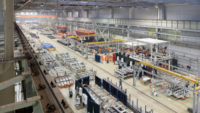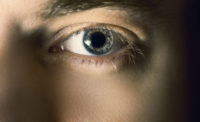A good night’s sleep is one of the things in life that we take for granted. It’s the first thing we sacrifice in our busy schedules without realizing how harmful sleep deprivation is.
Lack of sleep has negative consequences on workplace performance and productivity. Research shows that people who do not get enough sleep are less attentive on the job and tend to make more mistakes. What’s more, restless nights lead to irritation and more anxiety. Irritable moods also contribute to bad relationships with colleagues and create an unpleasant work environment.
Luckily, there are solutions that may not treat sleep disorders but certainly offer relief. They do this by alleviating some of the negative effects of sleep disturbances. Alternative and traditional treatments exist, but today’s modern world offers plenty of tech solutions. And with all available technology, it seems like a waste not to use it.
However, first and foremost, one must become familiarized with the most common sleep disorders, how they affect the working adult, and what can be done to remedy them.
Insomnia
Insomnia is the most common sleep disorder affecting as many as 30 million Americans. It occurs as a result of chronic stress, depression, and physical and emotional discomfort.
The effects of insomnia are quite harmful, particularly in the workplace. Sleepless nights can lead to memory loss, reduced alertness, and impaired performance. They also make people more prone to making errors and being easily distracted.
How can tech help?
There are many sleep apps specifically designed to analyze sleep patterns and offer tips on how to improve your sleep quality. Another alternative is light bulbs that eliminate the blue light from screens, creating a peaceful environment to lull you to sleep.
Smart beds and pillows that prompt you to change from an uncomfortable sleeping position are also available.
Circadian rhythm disorders
Circadian rhythm disorders refer to a disruption of a person’s internal body clock that controls the sleep-wake cycle. People suffering from one of these disorders have a hard time going to sleep or getting up at times required for work or school. This can result in people oversleeping or experiencing excessive sleepiness during the day, which negatively impacts work and social life.
How can tech help?
Circadian rhythm disorders are mainly caused by external stimuli, such as light and noise. Therefore, most of the tech gadgets on the market either block the harmful light from phones and tablets or use light technology to generate a soothing ambiance to help you sleep better.
Shift work disorder
Shift work disorder is a type of circadian rhythm disorder caused by an atypical work schedule. People most affected by this condition are those who work at night, in the early morning hours, or have rotating shifts. Almost 30% of shift workers suffer from symptoms caused by this disorder.
Having uncommon working hours results in a person being thrown-off her natural “biological clock.” This results in feelings of extreme tiredness throughout the day that interferes with a person’s ability to work properly.
How can tech help?
There are countless sleep apps that monitor your movement and breathing to offer insight into your sleep habits. Once you know what the core issues are, it will be easier to adjust your sleep behavior.
Other devices mimic natural light to help you realign your internal circadian clock with the external environment.
Bruxism
Bruxism or nocturnal teeth grinding refers to the clenching or grinding teeth during sleep. The causes of this condition are not entirely known. However, studies reveal that there is a close link between job-related stress and the grinding of teeth in the middle of the night.
Depending on how a person deals with pressure, bruxism can be a response to challenging situations or a coping mechanism for work-related stressful demands.
How can tech help?
Mouthguards equipped with sensors diagnose and help treat this condition. They detect when teeth grinding occurs and prompt the user to instinctively stop doing this by using soothing sounds.
Hypersomnia
Hypersomnia is a condition in which a person cannot stay awake during the day. Other symptoms include feelings of extreme tiredness and excessive sleepiness throughout the day.
People with hypersomnia can easily fall asleep anywhere, even at work or while driving. They also suffer from the lack of energy and have problems concentrating and thinking clearly.
How can tech help?
Light therapy is known to be effective in easing some of the effects of hypersomnia. What lightboxes do is mimic the effects of a sunny sky to improve your mood and give you a daytime energy boost. Sleep trackers can also help identify the problem. They monitor your sleep and detect sleep issues, making them easier to treat.
To sum up
Healthy sleep is crucial to success in your professional and personal life. Sleep disorders can cause serious problems, such as daytime sleepiness and tiredness, lower attention levels, and memory loss. On the other hand, a good night’s sleep makes a person more focused, confident, and more capable of thriving under pressure.
There has been a lot of progress in sleep technology that helps users identify and deal with their sleep-related issues. It is an area that will continue to develop in the future as more and more people are affected by sleep deprivation and constant stress.
If you or someone you know has trouble sleeping, check out some of the available tech solutions. Be sure to review all sleep gadgets before making a final decision, and if the problem persists, you should consult a medical professional.




